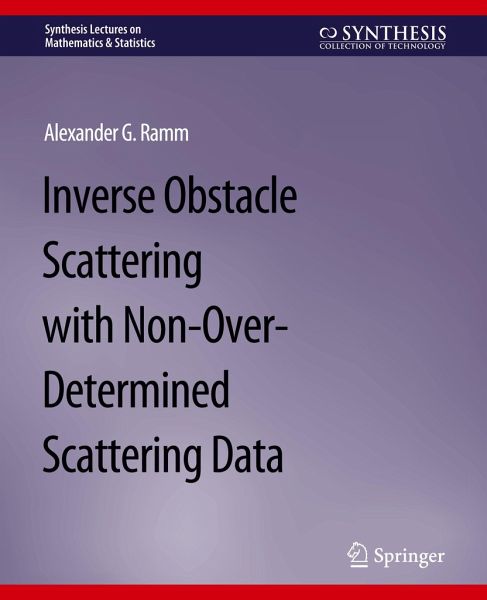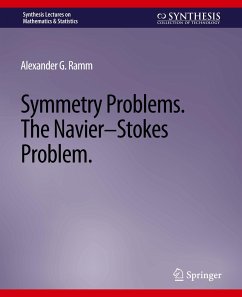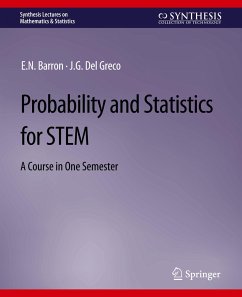
Inverse Obstacle Scattering with Non-Over-Determined Scattering Data

PAYBACK Punkte
0 °P sammeln!
The inverse obstacle scattering problem consists of finding the unknown surface of a body (obstacle) from the scattering ( ; ; ), where ( ; ; ) is the scattering amplitude, ; ² is the direction of the scattered, incident wave, respectively, ² is the unit sphere in the ³ and k > 0 is the modulus of the wave vector. The scattering data is called non-over-determined if its dimensionality is the same as the one of the unknown object. By the dimensionality one understands the minimal number of variables of a function describing the data or an object. In an inverse obstacle scattering problem thi...
The inverse obstacle scattering problem consists of finding the unknown surface of a body (obstacle) from the scattering ( ; ; ), where ( ; ; ) is the scattering amplitude, ; ² is the direction of the scattered, incident wave, respectively, ² is the unit sphere in the ³ and k > 0 is the modulus of the wave vector. The scattering data is called non-over-determined if its dimensionality is the same as the one of the unknown object. By the dimensionality one understands the minimal number of variables of a function describing the data or an object. In an inverse obstacle scattering problem this number is 2, and an example of non-over-determined data is ( ) := ( ; ; ). By sub-index 0 a fixed value of a variable is denoted.
It is proved in this book that the data ( ), known for all in an open subset of ², determines uniquely the surface and the boundary condition on . This condition can be the Dirichlet, or the Neumann, or the impedance type.
The above uniqueness theorem is of principal importance because the non-over-determined data are the minimal data determining uniquely the unknown . There were no such results in the literature, therefore the need for this book arose. This book contains a self-contained proof of the existence and uniqueness of the scattering solution for rough surfaces.
It is proved in this book that the data ( ), known for all in an open subset of ², determines uniquely the surface and the boundary condition on . This condition can be the Dirichlet, or the Neumann, or the impedance type.
The above uniqueness theorem is of principal importance because the non-over-determined data are the minimal data determining uniquely the unknown . There were no such results in the literature, therefore the need for this book arose. This book contains a self-contained proof of the existence and uniqueness of the scattering solution for rough surfaces.














